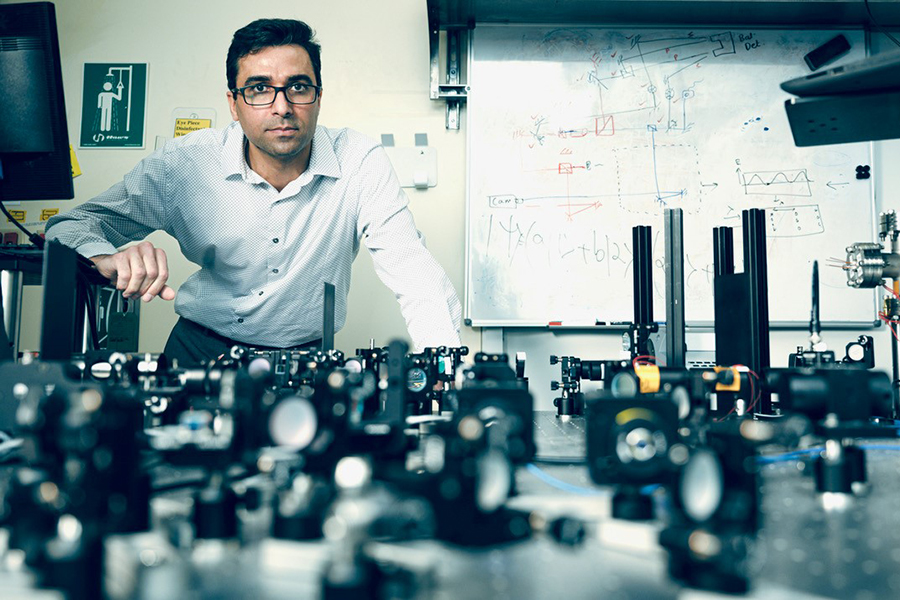Purdue ECE research could lead to more secure quantum communication devices

Research being done in Purdue University’s Elmore Family School of Electrical and Computer Engineering could lead to more efficient and secure quantum communication devices. A paper entitled “Long-range Cooperative Resonances in Rare-Earth Ion Arrays inside Photonic Resonators,” published in the journal Communications Physics, explores a new paradigm for enhanced light-mater interactions in solids.
Mahdi Hosseini, assistant professor of electrical and computer engineering, says using novel materials including thin-film lithium niobate (LN) crystals and rare-earth ions, they aim to devise nonlinear quantum photonic elements. By engineering arrays of atoms inside a solid-state photonic resonator, for the first time, Hosseini says they have observed collective emission from an atom array in a photonic chip. The enhanced directional emission of the atom array can enable the implementation of efficient photon sources and memories for quantum optical communication and sensing applications.
Hosseini likens the phenomena to how birds come to fly together in formation. He says each bird is initially flying independently and creating air flow enabling birds to communicate and eventually they synchronize and fly together. Hosseini says in the case of this research, atoms are the birds and the light emitted from the atoms is the air flow.
“The novelty here is that for the first time we were able to place arrays of atoms with high precision and integrate them with lithium niobate (LN) photonics,” he says. “The atoms are placed in certain geometries and precise locations such that they can feel each other, with the result being emergence of super-radiance, or collective emission, from the atoms.”
Hosseini says this collective emission leads to less loss and less noise in the process that can eventually advance quantum photonic devices. Everything is miniaturized and on-chip and light can be generated efficiently where instead of each atom emitting light randomly on its own, they’re now doing it in unison and coherently.
“This paradigm can address some of the fundamental issues related to loss and noise in quantum photonic devices tailored for communication,” says Hosseini. “We envision a futuristic optical network where encoding and processing of quantum information can lead to fundamentally secure communication.”
He says there are a lot of requirements to build such a network, one of the main ones being building sources and memories capable of generating and storing quantum information with high efficiency. Hosseini says “this new approach can allow for both functionality and at the same time it allows miniaturization of devices so they can be scaled up.”
The research was done in collaboration with Sandia National Labs it was supported by the National Science Foundation (NSF), the Purdue University Start-up fund, and the U.S. Department of Energy (DOE).
